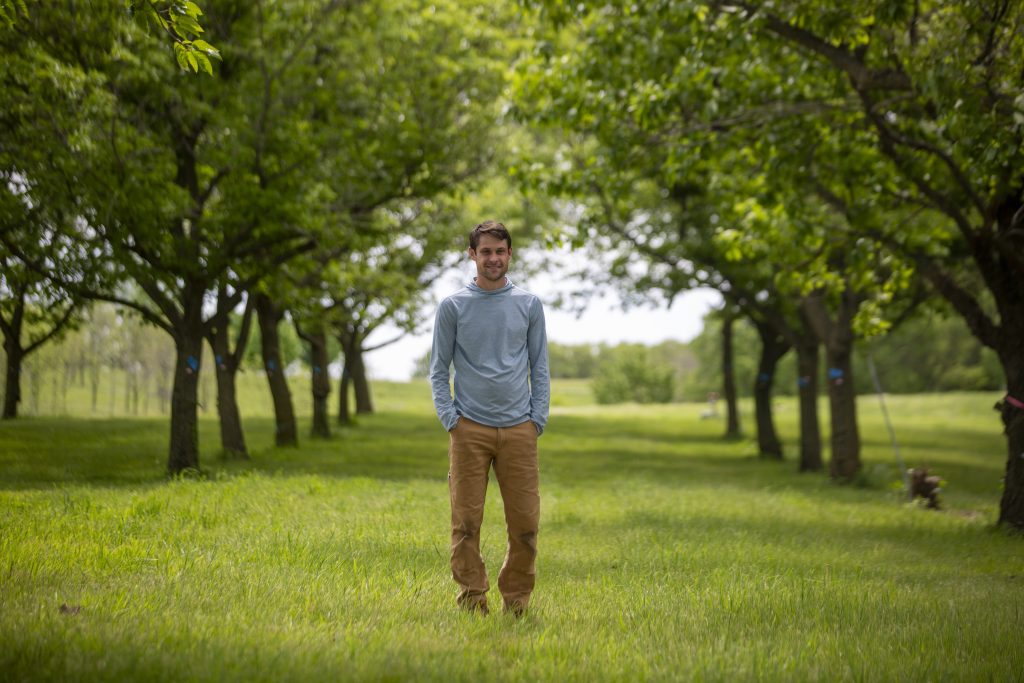Published on
Updated on

Chinese Chestnuts in the United States have a special legacy that has led them to be commercialized in very different ways than other nuts in the U.S., and that legacy — which consists mostly of hobbyists who breed on-farm seedlings — is full of blessings and curses for those who wish to pursue growing the nut tree for profit.
Researchers at the University of Missouri’s Center for Agroforestry, which has studied Chinese Chestnuts for decades, are working to harness the good qualities of that rich legacy while providing the standardization and reliability sought in any crop for large-scale commercial production in hopes of sparking a regional industry.
“When you think of almonds, you think of California,” said Ron Revord, assistant research professor in the School of Natural Resources. “Almost all of the hazelnuts in the U.S. are grown in the Pacific Northwest. Chestnuts could be that size industry here, and we’d like to have that realized. That could be done with best management practices.”
According the Revord, Chestnuts are particularly well-suited to Missouri because of its soil and its climate can help protect from frost damage.
“The river hills of Missouri are a truly special place for tree nut culture with deep loess deposits that are fertile and well-drained,” he said.
Revord explained that the chestnut industry in the U.S. has consisted of more than a century of on-farm plant material sharing and selection creating new seedlings. Professionals and hobbyists have then sold seedling offspring from parent trees that are particularly productive.
This practice means that it is difficult for producers to know what traits the individual seedlings will display —because chestnuts are outcrossing. However, it also means that chestnut orchards in the U.S. have an incredibly vast array of genetic variety, which is a great thing.
“That creates a really good opportunity for breeding programs to go in and select the seedlings that have inherited the best traits from their parents,” Revord said.
That selection is a big part of what Revord’s work entails. His research involves selecting seedlings with desirable traits, evaluating their genetic makeup and then establishing replicated trials by grafting. The trials will generate data-supported recommendations and new cultivars releases, with the goal to transition industry to cultivating orchards of clonal cultivars rather than seedlings. .
He relies on a counterpart, Jeanne Romero-Severson, professor of biological sciences at University of Notre Dame, for the genetic evaluations which analyze the tree’s parentage, ancestry and genetic variety.
Based on Romero-Severson’s initial evaluation of approximately 700 seedlings, Revord has already incorporated 40 on-farm selections into replicated trials at MU’s Horticulture and Agroforestry Research Farm in New Franklin, Mo, which will come into bearing next year.
Through high engagement of chestnut growers in Missouri, Tennessee and Kentucky, the breeding program, known as the Chestnut Improvement Network, now has more than 20,000 new offspring s growing in on-farm environments. Revord will be collecting data from these progeny on early-year yields, bud-break time and kernel size and quality.
Revord’s goal is to identify new, promising selections that may consistently avoid frost damage, offering producers needed production stability across environments, and which offers early production and return on investment. Then, the work of reaching out to producers will begin.
“Looking ahead, there is going to be quite a bit of outreach involved,” he said. “It’s a big shift from seedings to clonal, and we are going to have to do a lot of outreach about making that shift while maintaining seedling orchards for genetic diversity.”